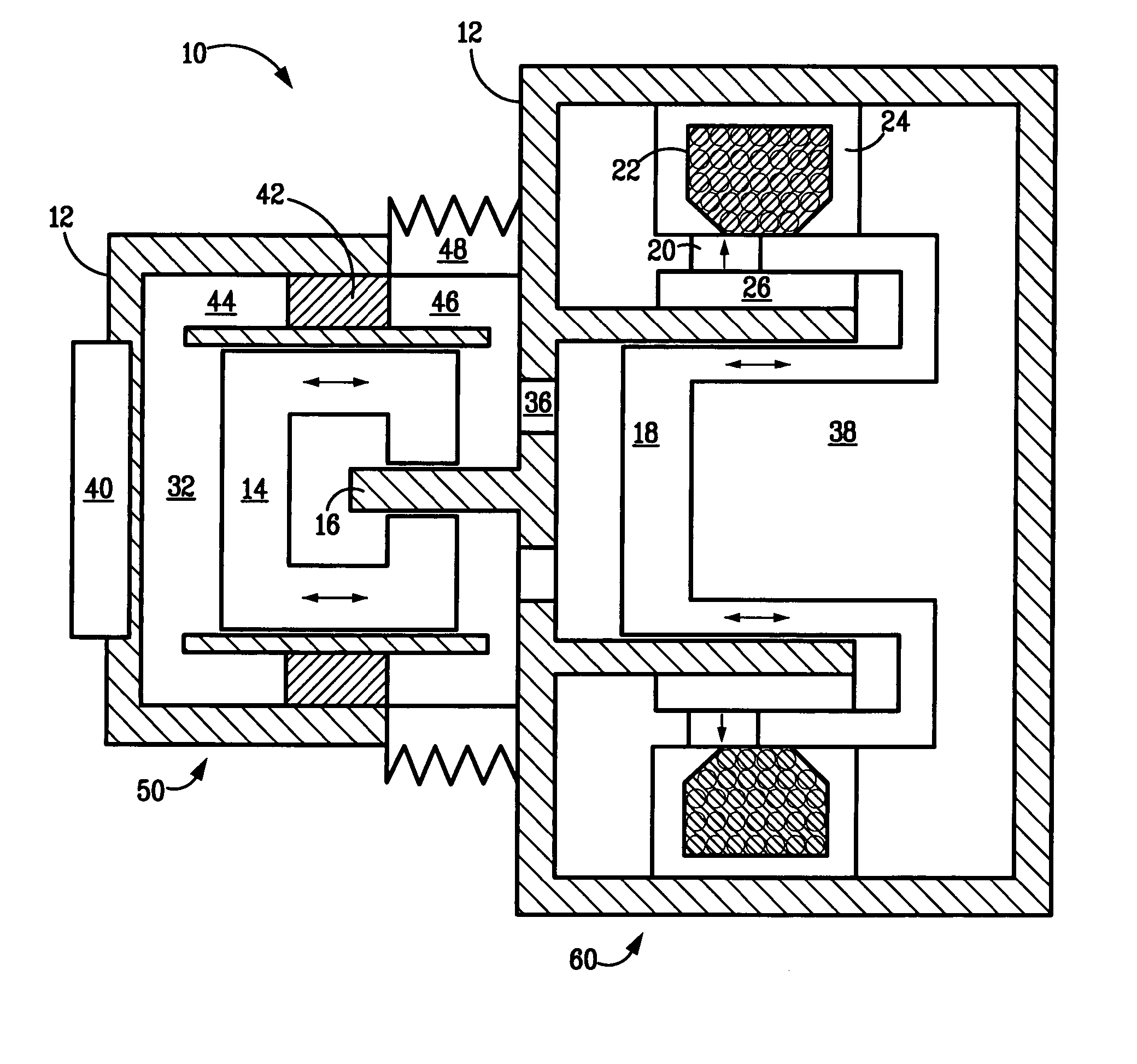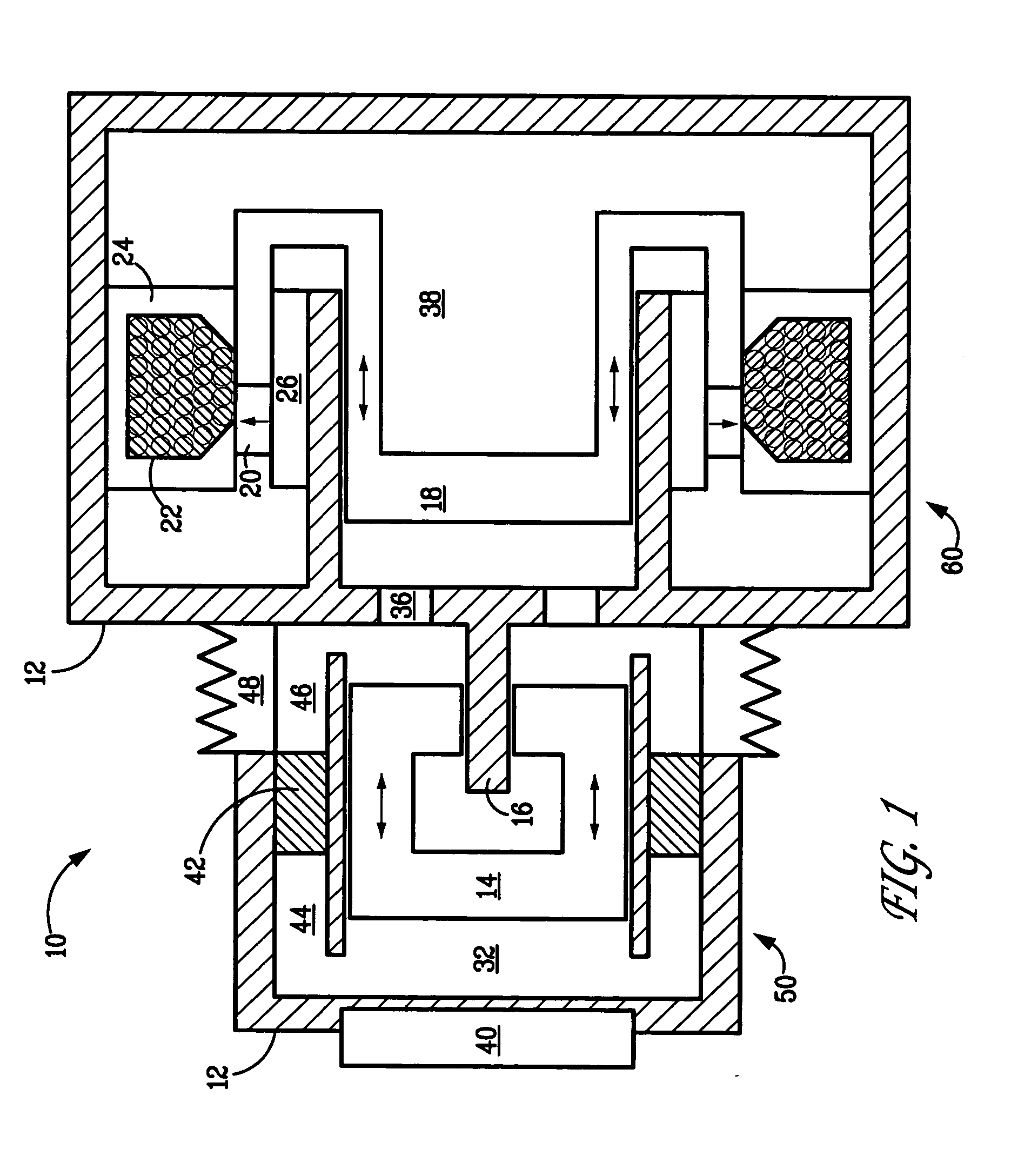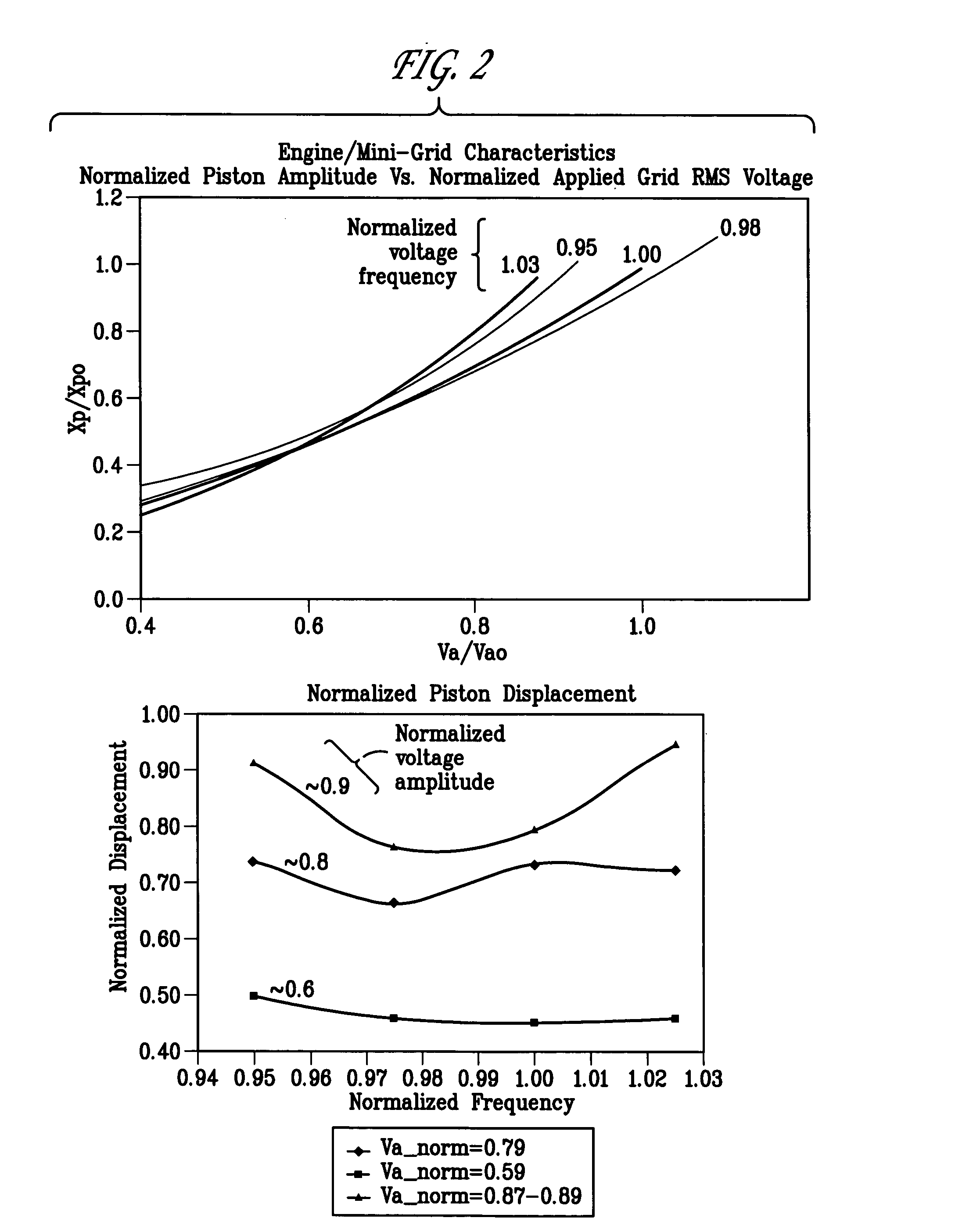Free piston Stirling engine control
- Summary
- Abstract
- Description
- Claims
- Application Information
AI Technical Summary
Benefits of technology
Problems solved by technology
Method used
Image
Examples
Embodiment Construction
Reference is now made to the embodiments illustrated in FIGS. 1-7 wherein like numerals are used to designate like parts throughout.
According to the teachings of the present invention, an “SPC” is connected between the terminals of an alternator of an FPSE / LA power system and an electrical load. The alternator of the FPSE / LA power system to which the teachings of the invention may be applied may be any linear alternator including, for example, the linear alternator depicted in FIG. 1. Other configurations and types of linear alternators may also be used. By using the SPC to control voltage amplitude and waveform frequency at the alternator terminals, FPSE piston displacement can be controlled to within a desired operating range. For the purposes of this disclosure and as will be readily understood by one of skill in the art, only piston excursion is discussed. In the context of FPSEs, by controlling piston excursion, displacer excursion can be similarly controlled as a result of ...
PUM
 Login to View More
Login to View More Abstract
Description
Claims
Application Information
 Login to View More
Login to View More - R&D
- Intellectual Property
- Life Sciences
- Materials
- Tech Scout
- Unparalleled Data Quality
- Higher Quality Content
- 60% Fewer Hallucinations
Browse by: Latest US Patents, China's latest patents, Technical Efficacy Thesaurus, Application Domain, Technology Topic, Popular Technical Reports.
© 2025 PatSnap. All rights reserved.Legal|Privacy policy|Modern Slavery Act Transparency Statement|Sitemap|About US| Contact US: help@patsnap.com



